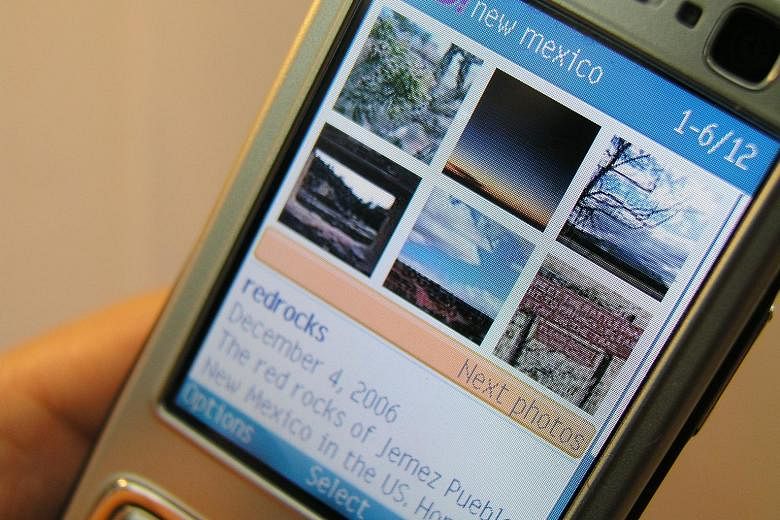NEW YORK • In 2005, Yahoo acquired Flickr, a popular photo site.
It already had a photo site, Yahoo! Photos, which was created in 2000.
In 2007, Yahoo said it would discontinue that first service. Users should move their photos to Flickr.
In 2013, users were told they would have one terabyte of space - for most, an effectively unlimited amount - to store images for free.
By then, digital cameras were ubiquitous and smartphones had gone mainstream.
Earlier this year, Flickr said it would be acquired by SmugMug, a smaller competitor. This news came with a storage limit: 1,000 photos. Users could pay or take the rest elsewhere.
The upshot? A photo, first uploaded to Yahoo at the turn of the century and not rescued this year, may finally meet its demise.
And here it is, almost 2019. Do you know where your photos are, amid a problem of what to do with ballooning digital photo collections.
"The thing I've come across with my clients is not necessarily 'How do I store them?', but 'How do I move them to the newest app?'" said Kaitlyn Ackron, a 17-year-old student in New Mexico who provides tech support to older folk via an organisation called Teeniors.
In a world where images are increasingly created on smartphones, the question of where all this media will go in the future has been shoved aside. The more urgent question is: What are people supposed to do with it right now?
These days, smartphone makers tend to just make users aware of what is already happening automatically. If you use an iPhone, every picture can be uploaded to Apple's servers, until you run out of free space, at which point you will need to start deleting things or rent some more space, from Apple.
Google promises unlimited free storage - "safe, secure and always with you".
Apple proactively processes a phone's images into categories: around dates or places; of particular people, whom it identifies with facial recognition.
Google's approach is more assertive. From your raw imagery, it will automatically edit a sequence of your child's development. It will do the same for your dog, whose face it can also recognise.
You may never organise your photos yourself. You may not even remember taking them in the first place, but they still exist.
Until they do not.
But there is help. There are people like Mr Jason Scott, a founder of Archive Team, a loose network of archivists and programmers who create tools for extracting data from services at risk of disappearing.
Kaitlyn's advice for seniors remains practical. "You always need to keep an eye on where you're storing your photos, to make sure things aren't going out of date," she tells them, describing the process as "tedious" but necessary.
"Technology isn't slowing down."
The seniors have advice for her too. "I just keep all my pictures on my phone," she said. "But my clients talk about how they kept scrapbooks and photo albums, and about how physically holding the pictures is a different experience."
Now, she prints some favourites of her own.
Beneath the roar of digital acceleration, there is still some shuffling of paper. A 2018 analysis by f/22 Consulting, a photo industry firm, noted that a printing business in turmoil has managed to siphon growth from the United States' bulging camera rolls.
Traditional prints are growing again. But not as fast as customised mementos and books, including some generated by tech giants using facial recognition and other artificial intelligence.
NYTIMES

